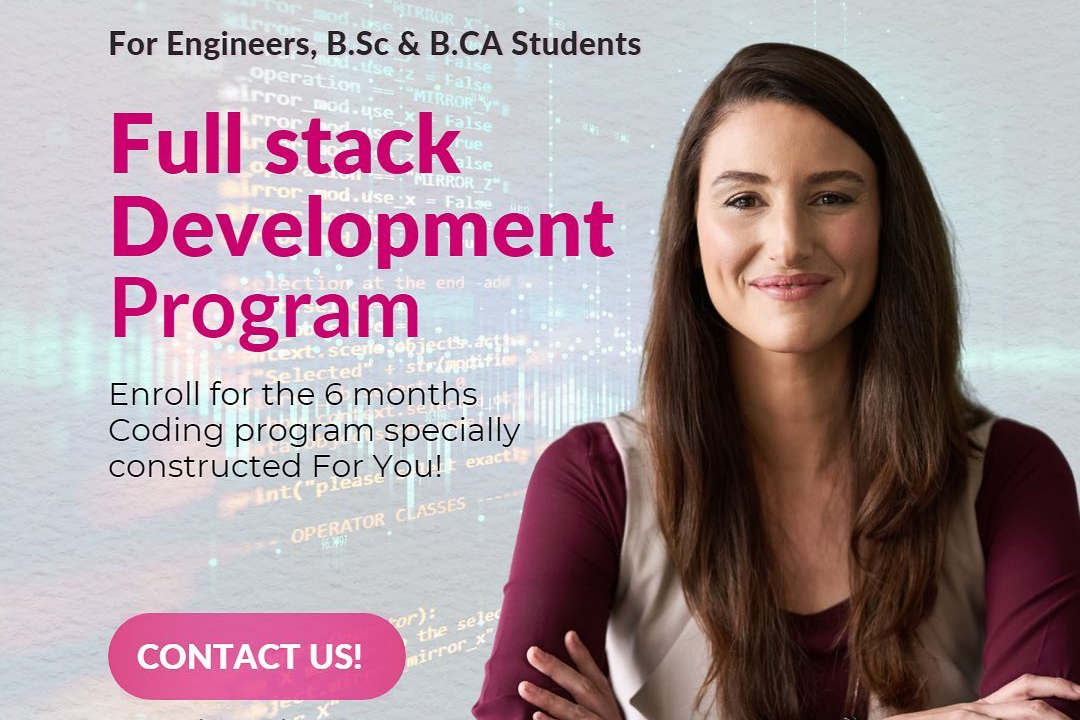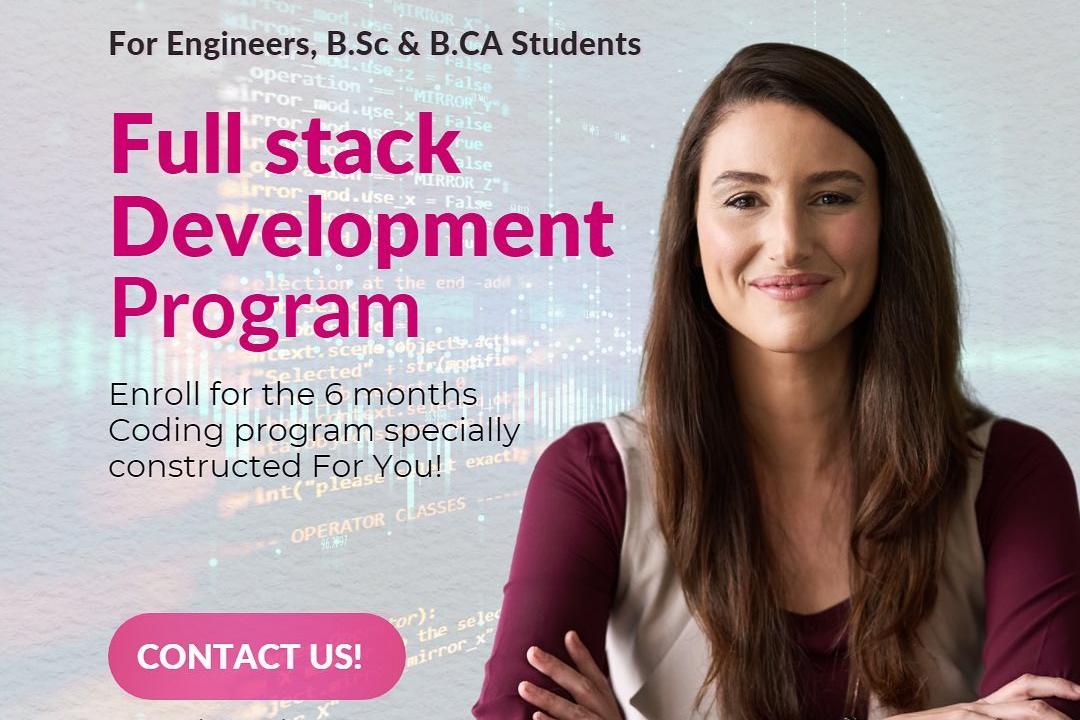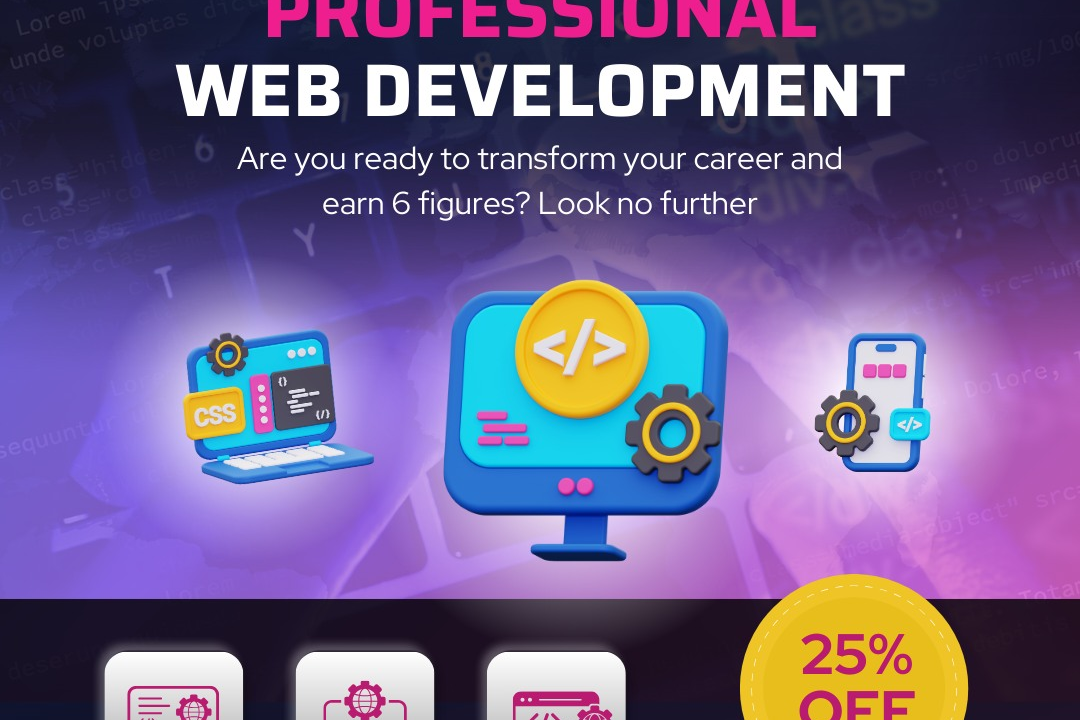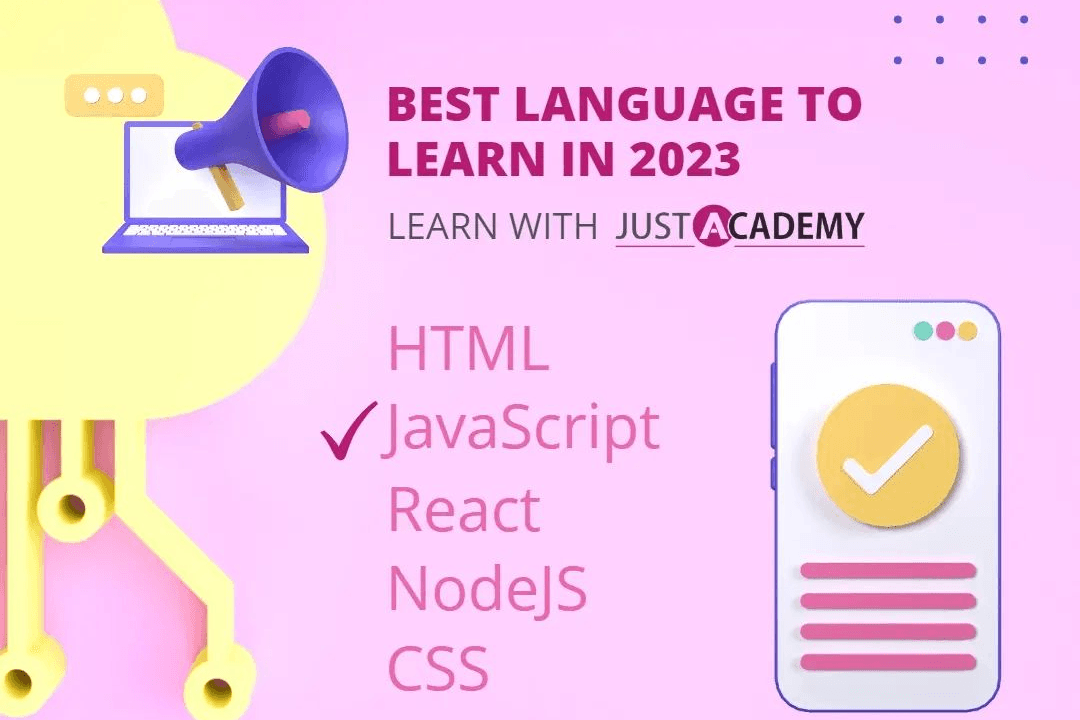Laravel Interview Questions Mcq
Essential Laravel Interview Questions: MCQ Format
Laravel Interview Questions Mcq
Laravel interview questions in the form of multiple-choice questions (MCQs) serve as an effective tool for both interviewers and candidates in the tech industry. They help assess the candidate's understanding of the Laravel framework, its features, and best practices in a concise manner. Utilizing MCQs streamlines the evaluation process, allowing for quick identification of a candidate's strengths and areas that require further exploration. This format also encourages candidates to think critically about their knowledge of Laravel, potentially leading to a deeper engagement during interviews. For organizations like JustAcademy, incorporating such MCQs into preparatory resources can enhance the learning experience for students aspiring to master Laravel.
To Download Our Brochure: https://www.justacademy.co/download-brochure-for-free
Message us for more information: +91 9987184296
1 - What is Laravel?
A) A PHP framework for web application development
B) A JavaScript framework
C) A database management system
D) A web server
Answer: A) A PHP framework for web application development
2) Which of the following is the latest version of Laravel as of 2023?
A) Laravel 5.8
B) Laravel 6
C) Laravel 8
D) Laravel 9
Answer: D) Laravel 9
3) What is Eloquent in Laravel?
A) A view templating engine
B) An ORM (Object Relational Mapping) system
C) A routing system
D) A form validation tool
Answer: B) An ORM (Object Relational Mapping) system
4) How can you install Laravel?
A) Download source code from GitHub
B) Use Composer to create a new project
C) Use npm to install
D) Download as a ZIP file
Answer: B) Use Composer to create a new project
5) Which command is used to create a new controller in Laravel?
A) php artisan make:controller
B) php create:controller
C) php artisan new:controller
D) php artisan controller:create
Answer: A) php artisan make:controller
6) What is the purpose of Middleware in Laravel?
A) To handle database transactions
B) To manage user sessions
C) To filter and modify HTTP requests
D) To route web traffic
Answer: C) To filter and modify HTTP requests
7) What file is used for environment configuration in Laravel?
A) .env
B) config.php
C) settings.yml
D) config.ini
Answer: A) .env
8) Which of the following is not a feature of Laravel?
A) Built in Authentication
B) Command Line Interface (Artisan)
C) Automatic Code Generation
D) Built in Mail support
Answer: C) Automatic Code Generation
9) How do you define a route in Laravel?
A) Route::create()
B) Route::define()
C) Route::add()
D) Route::get() or Route::post()
Answer: D) Route::get() or Route::post()
10) What is Blade in Laravel?
A) A database management tool
B) A PHP templating engine
C) A routing service
D) An ORM
Answer: B) A PHP templating engine
11 - Which command is used to run the Laravel development server?
A) php artisan serve
B) php serve
C) php artisan run
D) php artisan start
Answer: A) php artisan serve
12) What are Service Providers in Laravel?
A) Classes that create controllers
B) Classes that bootstrap the application
C) Classes for database migrations
D) Classes for middleware
Answer: B) Classes that bootstrap the application
13) Which database does Laravel use by default?
A) MongoDB
B) PostgreSQL
C) SQLite
D) MySQL
Answer: D) MySQL
14) How do you run database migrations in Laravel?
A) php artisan migrate
B) php migration run
C) php artisan update
D) php migrate apply
Answer: A) php artisan migrate
15) What is the purpose of Laravel’s built in task scheduling?
A) To schedule jobs and events
B) To manage database relationships
C) To control user access
D) To generate reports
Answer: A) To schedule jobs and events
These points provide a comprehensive overview of essential Laravel concepts and practices, beneficial for candidates preparing for interviews or for organizations conducting evaluations.
Here are additional points to enhance your understanding of Laravel along with their explanations:
16) What is Route Model Binding in Laravel?
A) A method to bind user input with models
B) A feature that automatically resolves model instances based on route parameters
C) A way to bind views to routes
D) A process for binding controllers to routes
Answer: B) A feature that automatically resolves model instances based on route parameters
17) How can you create a new migration file?
A) php artisan migration:create
B) php artisan make:migration
C) php artisan new:migration
D) php artisan generate:migration
Answer: B) php artisan make:migration
18) What is the purpose of the `@yield` directive in Blade?
A) To define a section of content to be injected later
B) To extend another view
C) To include a partial view
D) To create a loop
Answer: A) To define a section of content to be injected later
19) What function retrieves all records from a database table using Eloquent?
A) Model::list()
B) Model::all()
C) Model::fetch()
D) Model::get()
Answer: B) Model::all()
20) Which of the following is not a component of the Laravel ecosystem?
A) Laravel Forge
B) Laravel Envoyer
C) Laravel React
D) Laravel Nova
Answer: C) Laravel React
21 - What is the purpose of queues in Laravel?
A) To manage user sessions
B) To delay execution of tasks
C) To handle database migrations
D) To create custom routes
Answer: B) To delay execution of tasks
22) What is Laravel Telescope?
A) A routing tool
B) A debugging and profiling tool for Laravel applications
C) An ORM
D) A form validation package
Answer: B) A debugging and profiling tool for Laravel applications
23) What file defines the route files of your Laravel application?
A) web.php
B) routes.php
C) api.php
D) laravel routes.php
Answer: A) web.php
24) What is the purpose of database seeding in Laravel?
A) To create, read, update, and delete data
B) To populate the database with test data
C) To delete all records in the database
D) To migrate data from one database to another
Answer: B) To populate the database with test data
25) How do you define a resource controller in Laravel?
A) php artisan make:controller resource
B) php artisan controller:resource
C) php artisan create:resource controller
D) php artisan make:resource
Answer: A) php artisan make:controller resource
26) What is the purpose of `csrf_field()` in Laravel forms?
A) To secure forms against CSRF attacks
B) To validate user input
C) To create dropdown fields
D) To add styles to forms
Answer: A) To secure forms against CSRF attacks
27) How can you access configuration values in Laravel?
A) config::value()
B) Config::get()
C) config('key')
D) Configuration.key()
Answer: C) config('key')
28) What is a Facade in Laravel?
A) A mechanism for URL routing
B) A design pattern to provide a simple interface for complex subsystems
C) A type of controller
D) A query builder
Answer: B) A design pattern to provide a simple interface for complex subsystems
29) Which of the following is the correct syntax to define a named route?
A) Route::get('home', ‘HomeController@index’) >name('home');
B) Route::name('home') >get('home', ‘HomeController@index’);
C) Route::home('HomeController@index');
D) Route::get('home', ‘HomeController@index’) >alias('home');
Answer: A) Route::get('home', ‘HomeController@index’) >name('home');
30) How do you enable debug mode in Laravel?
A) Set DEBUG=true in .env file
B) Set APP_ENV=development in .env file
C) Change the config/debug.php file
D) Use php artisan debug:enable
Answer: A) Set DEBUG=true in .env file
These points should further enhance your knowledge of Laravel's features and functionalities, preparing you or your candidates for more in depth discussions or evaluations related to Laravel development.
Course Overview
The “Laravel Interview Questions MCQ” course is designed to prepare learners for job interviews by providing a comprehensive collection of multiple-choice questions (MCQs) specifically focused on Laravel, the popular PHP framework. This course covers essential topics such as routing, database migrations, Eloquent ORM, Blade templating, middleware, security features, and best practices in Laravel development. Through a quiz-based format, participants will not only test their knowledge but also reinforce their understanding of Laravel's core concepts, helping them build confidence and expertise to excel in technical interviews. By the end of the course, learners will be equipped with the skills and insights necessary to tackle common interview questions and effectively demonstrate their proficiency in Laravel.
Course Description
The “Laravel Interview Questions MCQ” course is an essential resource for developers seeking to enhance their knowledge and prepare for job interviews focused on Laravel, the renowned PHP framework. This course features a diverse array of multiple-choice questions that cover key concepts such as routing, middleware, Eloquent ORM, database migrations, and security practices within Laravel applications. By engaging with these thoughtfully curated questions, learners will not only test their existing knowledge but also deepen their understanding of Laravel's functionalities and best practices. As a result, participants will gain the confidence and skills needed to effectively articulate their expertise in technical interviews and stand out in the competitive job market. Whether you are a beginner or an experienced developer, this course will equip you with the necessary tools to succeed in your pursuit of a Laravel-focused career.
Key Features
1 - Comprehensive Tool Coverage: Provides hands-on training with a range of industry-standard testing tools, including Selenium, JIRA, LoadRunner, and TestRail.
2) Practical Exercises: Features real-world exercises and case studies to apply tools in various testing scenarios.
3) Interactive Learning: Includes interactive sessions with industry experts for personalized feedback and guidance.
4) Detailed Tutorials: Offers extensive tutorials and documentation on tool functionalities and best practices.
5) Advanced Techniques: Covers both fundamental and advanced techniques for using testing tools effectively.
6) Data Visualization: Integrates tools for visualizing test metrics and results, enhancing data interpretation and decision-making.
7) Tool Integration: Teaches how to integrate testing tools into the software development lifecycle for streamlined workflows.
8) Project-Based Learning: Focuses on project-based learning to build practical skills and create a portfolio of completed tasks.
9) Career Support: Provides resources and support for applying learned skills to real-world job scenarios, including resume building and interview preparation.
10) Up-to-Date Content: Ensures that course materials reflect the latest industry standards and tool updates.
Benefits of taking our course
Functional Tools
1 - Laravel Framework: The fundamental tool of the course is the Laravel framework itself. This open source PHP framework is renowned for its elegant syntax, robust security features, and an array of built in functionalities that streamline the development process. Students will learn to navigate its architecture, understand Models, Views, Controllers (MVC), middleware, and routing systems. Familiarity with Laravel is essential for modern web development, making it a key asset for any developer’s toolkit.
2) MySQL: MySQL is the most commonly used relational database management system paired with Laravel applications. This course emphasizes the integration of MySQL with Laravel through Eloquent ORM (Object Relational Mapping), which allows students to create, read, update, and delete operations seamlessly in the database. Understanding how to design databases, create relationships between tables, and execute queries is crucial for developing dynamic web applications.
3) Composer: As a dependency manager for PHP, Composer is integral to managing Laravel projects. The course covers the use of Composer to install and update Laravel packages effortlessly. Students will learn how to utilize the composer.json file to define project dependencies and versioning, streamlining the process of keeping libraries updated and ensuring compatibility. This tool enhances the efficiency and organization of Laravel projects.
4) PHP Unit: For testing code in Laravel applications, PHP Unit serves as a vital tool. The course introduces students to automated testing practices that improve code reliability and maintainability. By writing tests using PHP Unit, developers can ensure that their applications behave as expected, catch bugs early, and make future modifications with confidence. This practice solidifies the quality of the development work and is highly valued in production software environments.
5) Postman: Postman is a popular tool for API testing and development, which is crucial for modern web applications that often require responsive and interactive features. This course incorporates Postman to familiarize students with sending requests to their Laravel applications and receiving responses. Hands on experience with Postman enables learners to develop and test RESTful APIs, enhancing their understanding of how different components of an application communicate with each other.
6) Git: Version control is fundamental in software development, and Git is the most widely used system for this purpose. Students in the course will learn to utilize Git for tracking changes in their Laravel projects, collaborating with other developers, and maintaining a clean and organized codebase. Understanding how to manage branches, handle merges, and revert changes using Git equips students with essential skills that are critical for working in team environments and maintaining version histories effectively.
By mastering these tools, learners not only prepare for the Laravel interview questions but also equip themselves with practical, real world skills applicable to numerous development scenarios.
To further enhance your skills and knowledge in Laravel development, here are additional essential tools and concepts covered in the course:
7) Blade Templating Engine: Laravel's built in Blade templating engine allows developers to create dynamic layouts efficiently. This course focuses on how to utilize Blade to streamline the presentation of HTML, PHP code integration, and manage template inheritance. Understanding Blade syntax, directives, and components empowers learners to build clean and maintainable views, making development faster and promoting reusability.
8) Artisan Command Line Interface: Laravel comes with a powerful command line interface called Artisan. The course will guide students on how to use Artisan to automate repetitive tasks, manage database migrations, and generate boilerplate code. Students will gain proficiency in creating custom Artisan commands, which enhances productivity and provides a deeper understanding of the Laravel framework.
9) Laravel Forge: For deployment and management of Laravel applications, familiarity with Laravel Forge simplifies server management tasks. This course introduces students to setting up servers, deploying applications, and automating server maintenance using Forge. Mastering Forge allows developers to focus more on coding and less on infrastructure management, providing a streamlined deployment process.
10) Laravel Mix: This powerful tool helps in managing asset compilation such as CSS and JavaScript files smoothly. The course covers the use of Laravel Mix for tasks like combining, minifying, and compiling assets through Webpack without overwhelming configuration settings. This tool aids in optimizing performance and ensures that resources are loaded efficiently for better user experience.
11 - RESTful API Development: Understanding REST principles is crucial for modern web applications. This course elaborates on building RESTful APIs using Laravel, covering routes, controllers, and responses formatting. Students will learn to create secure APIs, implement authentication, and structure their APIs in a way that promotes best practices and scalability.
12) Middleware in Laravel: Middleware provides a convenient mechanism for filtering HTTP requests entering your application. The course discusses how to create and use middleware for tasks such as authentication, logging, and CORS handling. Students learn to implement custom middleware, giving them control over request handling and enhancing application security and functionality.
13) Event Broadcasting: Learning about real time event handling is crucial in interactive applications. This course explains Laravel's event broadcasting capabilities, allowing developers to send notifications and updates to users in real time. Students will learn how to handle events, create listeners, and utilize web sockets, fostering dynamic and engaging applications.
14) Laravel Ecosystem: Beyond the core framework, understanding the broader Laravel ecosystem is essential. The course introduces Laravel's various tools like Horizon for queue monitoring, Nova for admin panels, and Telescope for debugging. Familiarity with these tools enables developers to adopt best practices and leverage the full potential of what Laravel offers.
15) Security Best Practices: Security is a cornerstone of web development. This course will delve into best practices for securing Laravel applications, including user authentication, protecting against SQL injection, cross site scripting (XSS), and cross site request forgery (CSRF). By understanding and implementing these practices, students ensure their applications are robust and secure against common vulnerabilities.
By mastering these advanced tools and concepts, learners will significantly enhance their capabilities, preparing them for successful careers as proficient Laravel developers. Each element discussed brings practical insights that can be applied in real world projects, reinforcing the real time project approach that JustAcademy prides itself on.
Browse our course links : https://www.justacademy.co/all-courses
To Join our FREE DEMO Session: Click Here
This information is sourced from JustAcademy
Contact Info:
Roshan Chaturvedi
Message us on Whatsapp: +91 9987184296
Email id: info@justacademy.co
Adp Solutions Interview Questions Angular Js
Junior Vs Senior Flutter Developer Interview Questions
React Native Interview Questions For 1 Year Experience












